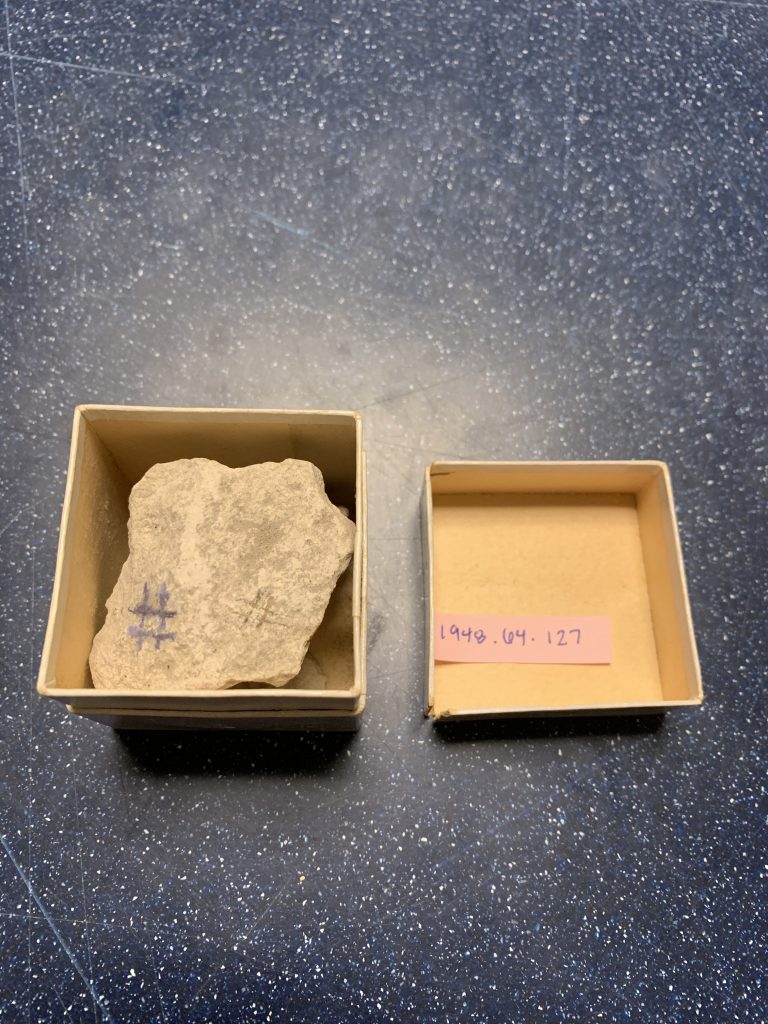
Stone fragments from Various Egyptian Archaeological Sites 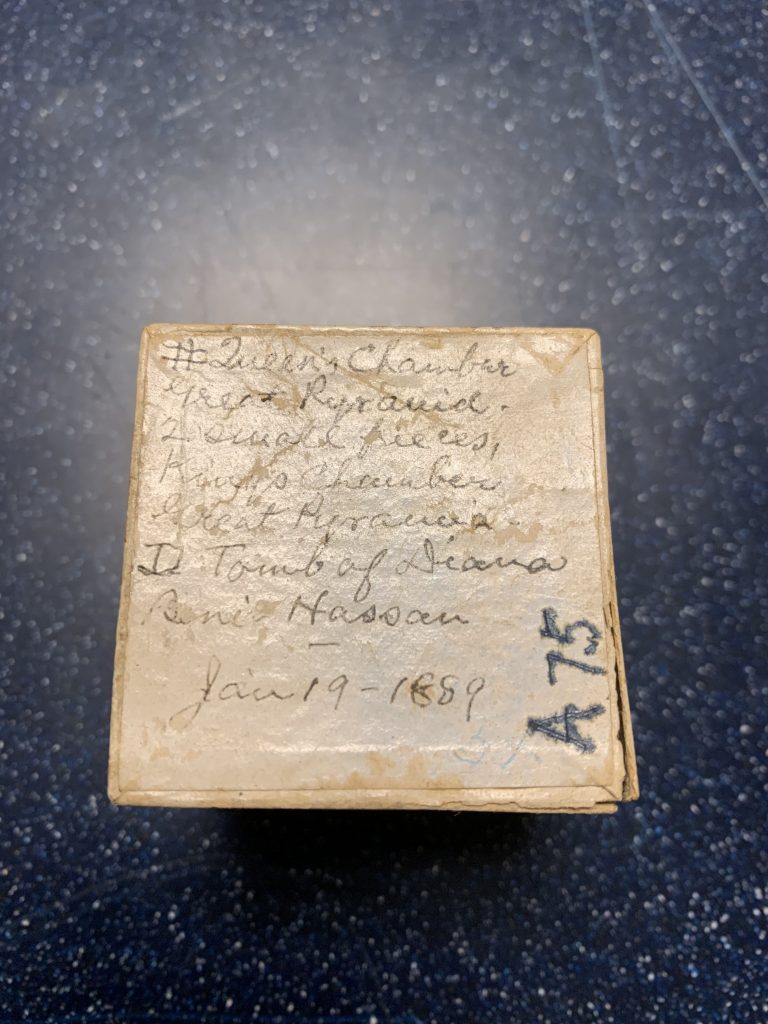
Specimen Box with Reeve’s Handwritten Label
- BM #: 1948-64-127
- Place Acquired: Giza, Egypt (29°58′45″N 31°08′03″E) Beni-Hasan (27° 55′ 59.99″ N 30° 52′ 59.99″ E)
- Date Acquired: January 19th, 1889
- Material: Stone (granite)
In 1890 General Reeve went on a tour with his wife and companions to Egypt, Syria and the Aegean Islands. It is during this tour when Reeve visited the Great Pyramid in Giza, Egypt and the Beni-Hasan complex on the eastern bank of the Nile south of Cairo. Both sites contain the tombs of Egyptian Pharaohs and royalty. Pharaoh Khufu as a burial site constructed the Great Pyramid for him and his wife. The Beni-Hasan complex contains 39 tombs of Egyptian government officials and elite. (Britannica, 2014). Reeve later wrote about his travels in his book How We Went and What We Saw.
The first archaeological excavations to the Great Pyramid began in 1880, soon before Reeve visited. When Reeve got to Egypt these excavations were still occurring and he was able to tour inside the pyramid looking at the two interior chambers and tomb. During Reeve’s visit to the Beni-Hasan complex he was able to explore the Tomb of Diana, an Egyptian elite during the Middle Kingdom, the site in which he collected his sample.
The Great Pyramid of Giza was built during Pharaoh Khufu’s reign. Khufu was an Egyptian monarch that reigned in the 4th dynasty from 2590 to 2568 BC. While much of Khufu’s reign is not well documented it has been noted that he was a tyrannical and unjust ruler. Khufu designed the pyramid to be the final resting place for him and his wife, as evidenced by the inclusion of the Queen and King’s Chambers. The Great pyramid is the oldest and largest pyramid in the area because of Khufu’s belief of it to be a “staircase to heaven.” However, only Khufu was actually buried in the pyramid, his wives and mother are buried in three smaller accompanying pyramids nearby (Rogers. 2018). The Great Pyramid of Giza is the oldest and largest pyramid built within the complex. The pyramid was built using manpower from the Egyptian masses. Khufu commissioned Egyptians to work on the pyramid taking roughly 20 years to complete (2580 BC-2560BC). It is not known exactly how the pyramid was built but the most supported theory remains that stones were dragged from a nearby quarry and lifted into place. The pyramid is constructed from limestone and granite.
Included in Reeve’s travels of Egypt was a tour of Beni Hasan and in particular the Tomb of Diana in which Reeve took a sample from. During the Middle Kingdom of Egypt the pharaohs “divine right” to rule was questioned and their power as rulers began to decline. Power was now spread out among government officials and elites rather than in the hands of one single ruler (Bryant, 2014). With power spread out among multiple elites rather than one ruler, large monuments and burial sites were no longer built for single rulers, such as the Great Pyramid. Rather, large burial areas were built for local elites, such as Beni Hasan (Bryant, 2014). The Beni-Hasan complex was used primarily during Middle Kingdom Egypt (2200 BC-1600 BC) as a burial site for local monarchs and government heads. The complex contains 39 individual tombs total (Tiresome Traveler, 2018).
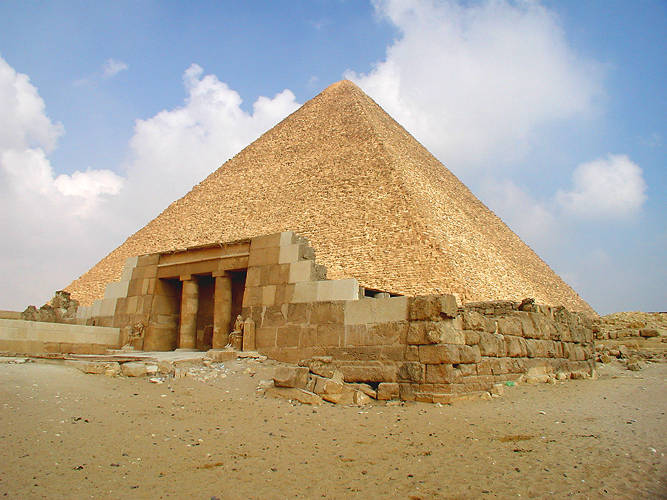
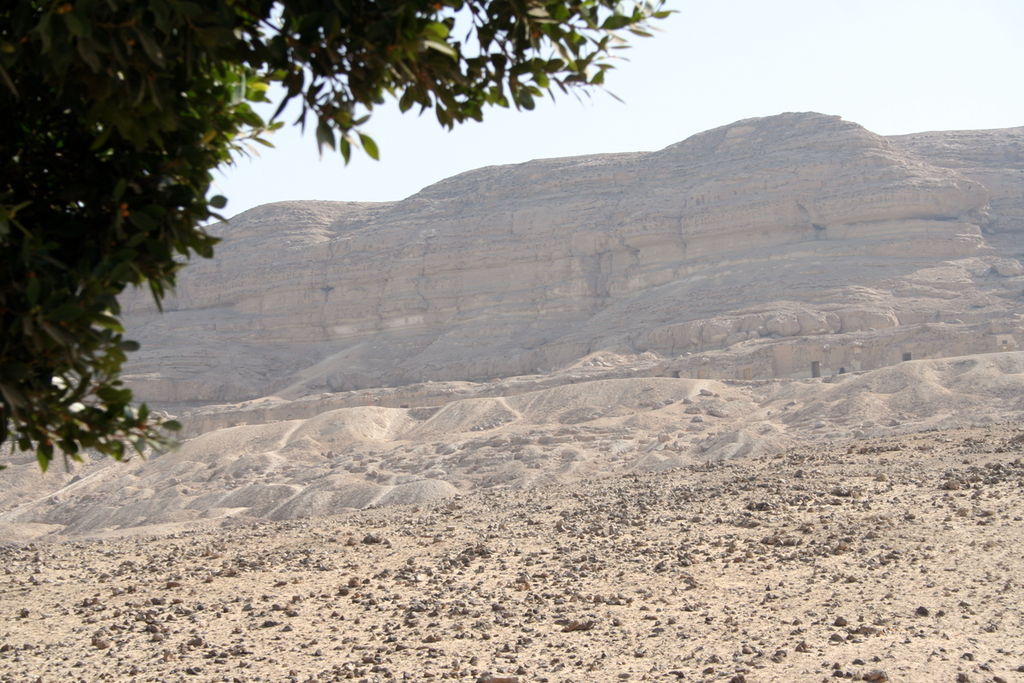
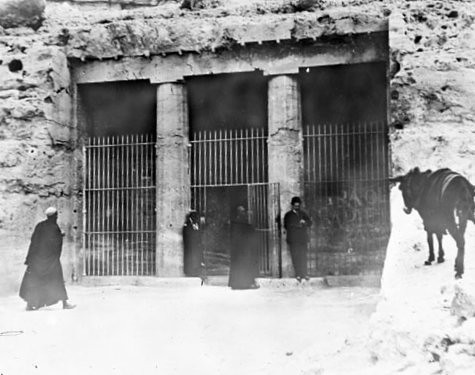
For Further Reading:
- Reeve, Charles McCormick, 1890. How We Went and What We Saw. New Port: The Knickerbocker Press. Chapters V and VI.
- Bonwick, James. 2002. The Great Pyramid of Giza: History and Speculation. New York: Dover Publications Inc.
- Eldeen, Nehad Kamal. “The Great Pyramid as the First Amduat Tomb.” Journal of General Union of Arab Archaeologists 16, no. 16 (2015): 14-29.
- Britannica. 2014. “Beni Hasan.” Encyclopedia Britannica Inc. https://www.britannica.com/place/Beni-Hasan
- Rogers, Jon. 2018. “Pyramid Scheme: Where is the Great Pyramid of Giza, who was buried inside it and what was it used for?” https://www.thesun.co.uk/news/6908781/great-pyramid-giza-egypt-where-buried-khufu/
- Egypt Exploration Society. “Beni Hasan Al-Shuruq survey.” https://www.ees.ac.uk/beni-hasan-al-shuruq
- Tiresome Traveler. 2018. “Beni Hassan: Middle Kingdom Tombs.” Once Upon a Backpack. https://onceupon-abackpack.com/beni-hassan-guide-minya/
- Dewayne, Bryant. 2014. “The Beni Hasan Tomb Inscription and the Patriarchal Period.” Apologetics Press. http://www.apologeticspress.org/apcontent.aspx?category=13&article=4811